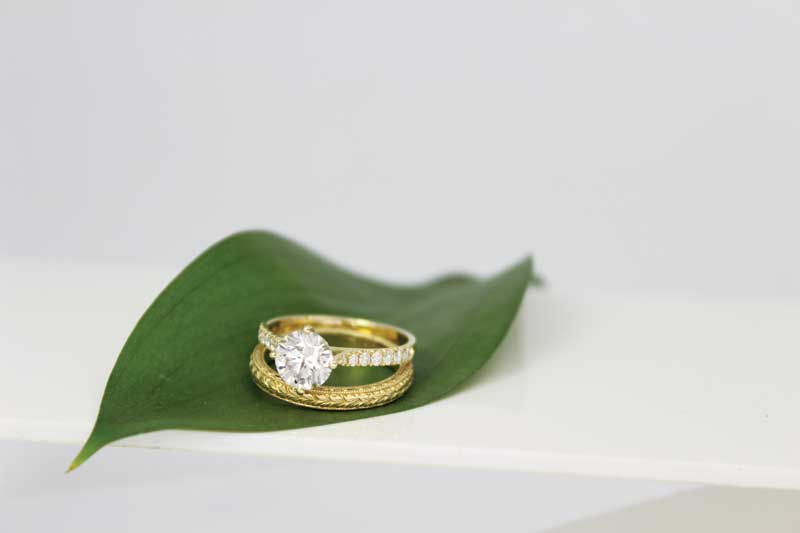A choice in the matter

Positioning lab-growns as another choice can help create a balanced marketing message, says Moss. “Saying they’re less expensive by 30 per cent is one way to do it,” he explains. “To market diamonds, we need to talk about them in positive terms. The jewellery industry can destroy itself by being shortsighted and negative. If we don’t start talking positive about all components of jewellery instead of putting each other down, sooner or later, the negative talk will hurt the industry in the long run and decrease desire for diamonds.”
Pure Grown Diamonds president and CEO Lisa Bissell says the company positions lab-growns as conflict-free and eco-grown, and works to ensure consumers understand the stones are optically, chemically, and visually identical to a mined diamond.
“The only difference is the point of origin—instead of being from below the ground, lab-grown diamonds are grown above the ground,” she says. “It is helpful to offer the analogy that a rose grown in a greenhouse is just as beautiful as one from the garden.”
In 2014, Natural Diamond Monitoring Committee (NDMC)—which was co-founded by Gem and Jewellery Export Promotion Council (GJEPC)—reported the annual production of gem-quality rough synthetic diamonds was less than 350,000 carats, compared to more than 125 million carats comprising production of natural gem-quality rough.
Carl Lehnhardt, director of diamonds at Stuller, says less than one per cent of the loose diamonds the company sells are lab-grown. Although the U.S. jewellery manufacturer has only been offering the stones since March, Lehnhardt says he doesn’t see lab-growns accounting for more than 10 per cent of Stuller’s diamond sales when it peaks.
“Lab-grown diamonds are here to stay, but none of us really know where the top is,” he adds. “For lab-growns as an industry to outpace mined diamonds, you would have to have hundreds of thousands of CVD machines running 24-7.”
Like Fair Trade Jewellery Co., Stuller is positioning lab-grown diamonds as a choice, says its vice-president of diamonds and gemstones, Stanley Zale.
“The value of a lab-grown is derived from the value we put on a natural diamond,” he said. “If we’re going to go around and bash natural diamonds, then I don’t see that as being productive and enhancing the value of lab-growns.”
Taylor estimates lab-grown diamonds account for about 30 per cent of his sales, although he says customers tend to lean toward buying natural diamonds in the bigger sizes. Fair Trade’s selling process, however, is not about pitting one option against the other.
“We present both lab-grown and naturals at once as a bit of an à la carte menu,” Taylor explains, adding consultations can sometimes take several hours. “We spend more time educating the customer than we do selling them.
“The jeweller has gotten away from being a trusted advisor about a very precious item and shifted toward moving goods, rather than providing a luxury service around those goods. If a retailer has a culture of dialogue, then any product that has a deeper conversation associated with it is going to be an easier sell for them.”





